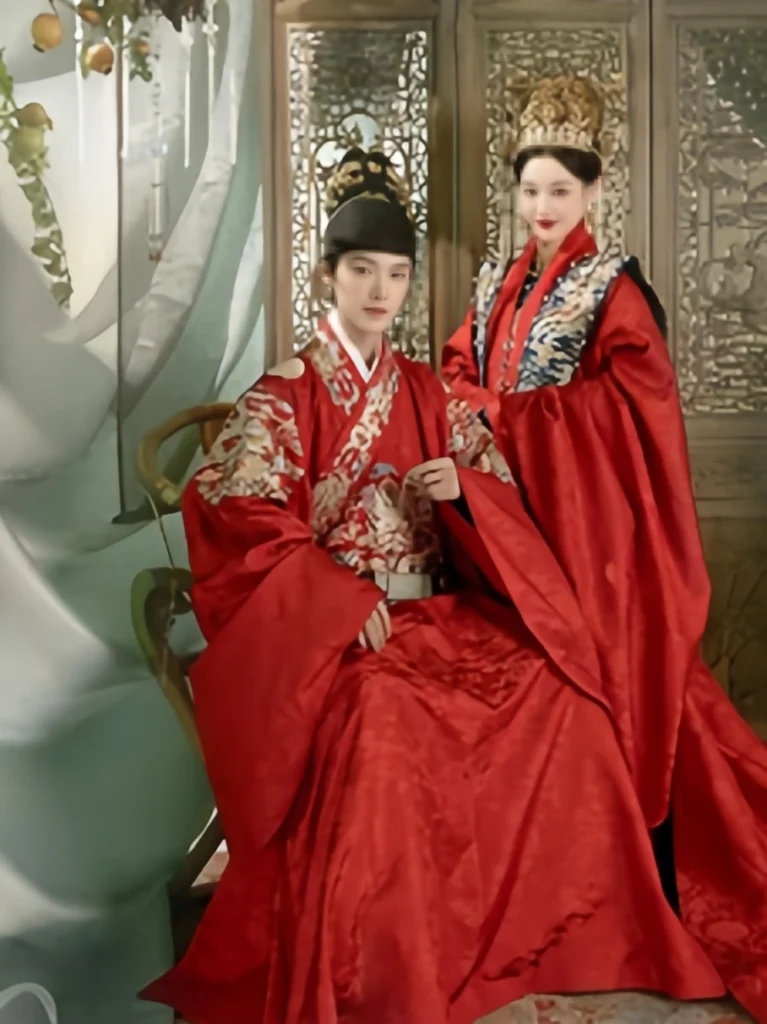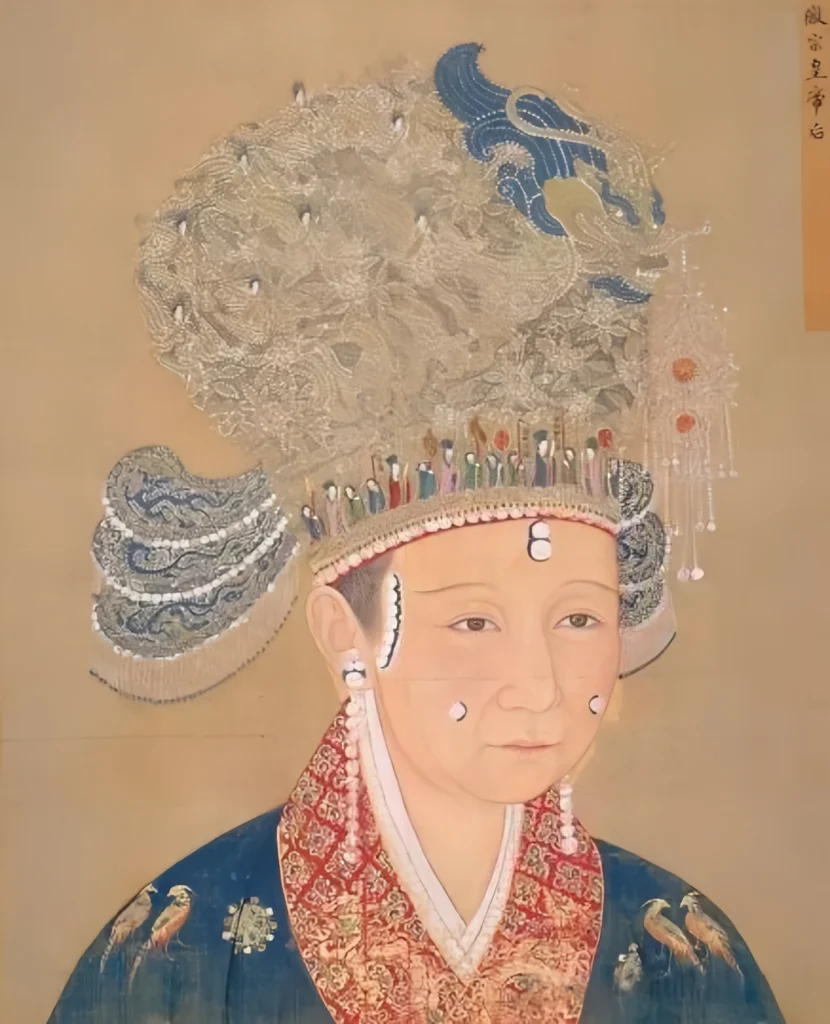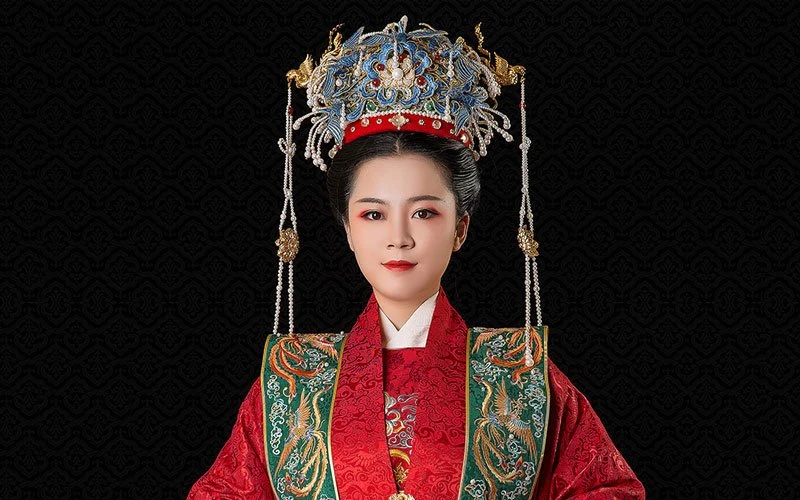Fengguan Xiapei: 5 Reasons It Defines Chinese Wedding Attire

Fengguan Xiapei, a cornerstone of Chinese wedding attire, is captivating brides in 2025 with its timeless elegance and deep Chinese cultural heritage. This ceremonial headdress (fengguan) adorned with dragon and phoenix motifs, paired with the flowing xiapei shawl, has evolved through centuries of Chinese history. Once reserved for nobility, Fengguan Xiapei is now a symbol of Hanfu wedding fashion, blending tradition with modern romance. Here are five reasons why Fengguan Xiapei is the ultimate choice for Chinese weddings today!
Fengguan Xiapei, a cornerstone of Chinese wedding attire, captivates with its timeless elegance. To understand its place in the broader evolution of traditional Chinese wedding dresses, explore this historical overview.

Fengguan Xiapei’s Historical Elegance
Fengguan Xiapei’s roots trace back to the Qin and Han dynasties, with xiapei evolving from the decorative pibo shawl. By the Sui and Tang, xiapei became a vibrant, cloud-like accessory, while fengguan emerged as a gold-adorned headdress in the Eastern Jin, per Wang Jia’s Shiyi Ji (source: https://ctext.org/). Formalized in the Song dynasty for empresses, Fengguan Xiapei became iconic Chinese wedding attire by the Ming. This Hanfu wedding fashion embodies Chinese cultural heritage, connecting brides to centuries of tradition.
The term “fengguan” first appeared in Wang Jia’s Shiyi Ji of the Eastern Jin, stating: “(Shi Jilun) had Xiangfeng tune jade to give to artisans, making inverted dragon pendants; winding gold, making fengguan hairpins, … casting gold hairpins resembling phoenix crowns.”
Here, fengguan required gold hairpins for decoration, already a composite headdress. However, at this time, the xingzhi and name of fengguan were not incorporated into imperial ritual systems as exclusive crown accessories for empresses and consorts. In the Tang dynasty, palace maids also wore fengguan. Yet, in Tang dynasty ritual concepts, women were not supposed to wear crowns, as noted in Tang Liudian Volume 4, Libu Shangshu, which lists the clothing of empresses and noblewomen as “dianchai liyi” without crowns. Li Shangyin’s Yidu Neiren Zhuan states: “Remove hairpins and bracelets, don crown and ceremonial robes … truly an emperor.”
This indicates that women’s typical clothing did not involve “donning crowns,” but also shows a trend toward women wearing crowns. In the Song dynasty, the fengguan in the clothing system evolved from the tuanguan, influenced by major shifts in social customs from Tang to Song and the evolution of phoenix decorations, formally designating fengguan as ceremonial clothing and incorporating it into the empress and consort clothing system, a practice that began in the Song and continued to the Ming dynasty.

In ancient China, fengguan xiapei originally served as ceremonial clothing accessories for noblewomen, also symbolizing women’s social status. Due to regulations stating that xiapei “cannot be worn without imperial favor,” ordinary women were not permitted to wear it. So, how did fengguan xiapei gradually develop from the Song dynasty into wedding attire for women, allowing common women to enjoy the honor of wearing fengguan xiapei during marriage, dressing as nobly as imperial consorts, sharing the supreme honor? There is a touching story behind this.
Legend has it that in the late Northern Song, when Jin soldiers invaded south, capturing emperors and nobles, Song Huizong’s son, Kang Wang Zhao Gou, fled in haste, heading straight to Jiangnan. Upon reaching Qianjin Village in Xidian, he noticed a dilapidated temple by the roadside, where a girl sat on a grain basket in the temple’s drying yard.
Seeing Kang Wang fleeing, the girl, quick-witted, told him to hide inside the grain basket while she sat calmly atop it as if nothing happened. When Jin soldiers arrived and asked if anyone had passed by, she calmly pointed and said they had fled south. The Jin soldiers believed her and chased south, allowing Kang Wang to escape mortal danger. He thanked her profusely, deeply fond of this beautiful and clever young woman, and gave her a red handkerchief he carried, revealing his identity and saying: “On this day next year, I will surely come to marry you. You only need to wave the red handkerchief on the ridge, and I will recognize you.”
After reaching Hangzhou and ascending the throne, Kang Wang went to marry the girl as promised, but she cherished the free life among commoners and was reluctant to leave her family and neighbors, unwilling to enter the palace. Fearing it hard to defy imperial orders, she prepared many red handkerchiefs and had her sisters wave them on that day, making it impossible for Emperor Gaozong to identify her, so he gave up.
To repay her life-saving grace, Song Gaozong issued an edict: “All Zhejiang women are to be ennobled!” This worried the accompanying ritual officials, who said to the emperor: “How can all be ennobled?” Gaozong thought and said: “What’s so difficult? Let them wear xiapei when they marry!” From then on, brides wore xiapei, donned red robes and red skirts, and did not forget to cover their faces with the red handkerchief gifted by Kang Wang. This custom passed down through generations and is known to all, young and old, to this day.
Thus, fengguan xiapei developed, becoming the wedding attire for Han women through the dynasties until modern times, when Western ideas arrived, and Western wedding dresses gradually entered people’s view. During the Republic of China and for a long time after the founding of New China, wedding dresses became the standard wedding attire, with traditional wedding clothing chosen less often, except in some traditional regions, as wearing wedding dresses was seen as a symbol of fashion. However, entering the 21st century, especially in the last decade, traditional wedding attire has sparked a craze among young people, with fengguan xiapei standing out among various xingzhi wedding attire, becoming a wedding fashion and winning people’s love.

The unique colors and patterns of fengguan xiapei are key reasons for its prominence. First is the color of fengguan xiapei—red. Red is a manifestation of traditional Chinese cultural color, the mainstream color for Chinese people from ancient times to the present, making red fengguan xiapei a choice for weddings, embodying Chinese cultural connotations and traditional aesthetic significance.
Even with the passage of eras, the traditional color concept in Chinese hearts has not faded. While Western civilized weddings impact Chinese traditional wedding clothing culture, fengguan xiapei still captures the deep love for traditional wedding attire in Chinese hearts with its unique charm, as it is not only a wedding garment but also expresses the clothing color culture inherited in China to this day.
Moreover, the patterns on wedding attire are another indispensable factor. Throughout history, wedding attire primarily featured four classic patterns: xiangyun wen, ruyi wen, longfeng wen, and baihua baishou patterns. Among them, longfeng wen embroidery depicts dragons and phoenixes dancing together, symbolizing auspiciousness; xiangyun wen patterns represent “auspicious clouds,” a cultural concept expressing Chinese aspirations for peace and prosperity; ruyi wen, a traditional Han pattern shaped like ruyi, symbolizes “good fortune as wished,” reflecting Chinese hopes for fulfilled desires; the least-used baihua baishou wen expresses the vision of harmony between humans and nature. For these reasons, the meticulously crafted patterns on fengguan xiapei and their auspicious meanings are significant factors in why more young people today choose fengguan xiapei.

Thus, it is undeniable that the revival of fengguan xiapei is an inevitable trend. In today’s media-driven shaping of national values and purchasing preferences, promoting the concept of “traditional wedding attire revival” through TV dramas and films is essential.
Major mainstream media should be fully utilized to strengthen the promotion of traditional wedding customs and the dissemination of related knowledge, helping people recognize that traditional wedding customs and clothing culture are indispensable parts of Chinese national culture, guiding people’s choices and wearing of wedding attire, and enhancing national consciousness and cultural identity among Chinese people.
Additionally, efforts should start with the younger generation, increasing the emphasis on traditional ethnic clothing in education, encouraging students to respect and promote their national clothing; if supported by the development of related industries and the protection of endangered traditional crafts, preserving the artistry and techniques of ethnic wedding attire, fengguan xiapei and Chinese national wedding attire will surely shine brilliantly.
For more fascinating facts about Fengguan Xiapei, check out this article.





Responses